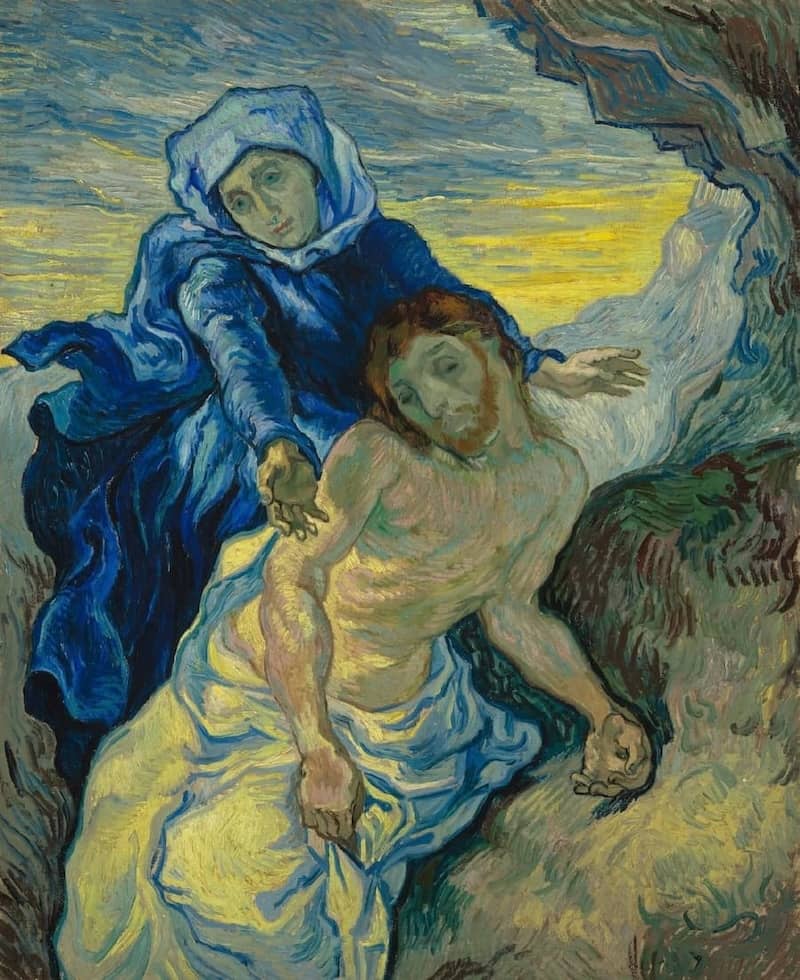Pieta (after Delacroix), 1889 by Vincent van Gogh

Van Gogh had admired the work of Eugene Delacroix long before he arrived in Paris, and was greatly impressed with the subtle vibrancy of his palette. Delacroix's work, with reference to his understanding of colour, had also been influential on the work of the Impressionists Monet, Cezanne, and Manet, It was Delacroix's romantic colouring that was of primary influence on Van Gogh, who was not so drawn to his choice of subjects, and mostly based his paintings on the world at large rather than religious, romantic or mythical topics.
There were a few exceptions, with this Pieta being one. At the time Van Gogh pointed this he was suffering a period of tormented religious dreams, and it is probable that this Pieta was as a result of this. Ironically, the print of Delacroix's work that he had was in black and white and therefore denied the artist the one element that he was so influenced by. As a consequence Van Gogh's Pieta was based on an assimilation of his interpretation of colour, and recollections of Delacroix's colouring from originals he had seen previously.




















